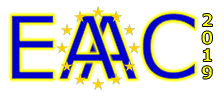Speaker
Description
In order to validate the dielectric-based short-pulse wakefield Two Beam Accelerator concept on a relatively large scale without a significant budget increase, the High Energy Physics Division of Argonne National Laboratory plans to demonstrate a ~500-MeV module in the current Argonne Wakefield Accelerator facility within the next 5 years. A new high shunt impedance dielectric wakefield accelerator is the key element for this experiment. In the last two decades, the theoretical and experimental investigations of dielectric accelerating structures for application to wakefield acceleration have predominantly used a dielectric-lined waveguide, due to its simple geometry (i.e. low fabrication cost). However, in comparison with the prevailing metallic disk-loaded accelerators, the dielectric-lined waveguide suffers from a lower Q-factor and lower shunt impedance. Starting from 2019, we plan to develop a new dielectric-disk loaded accelerator (DDLA). The preliminary simulation shows that, even with 5e-4 of loss tangent dielectric material (eps=50), we can achieve ~200Mohm/m shunt impedance at 26GHz traveling wave operation (the beam aperture keep the same in the comparison), which is 4 times higher than those of the conventional dielectric loaded accelerator. This will meet the requirements of the proposed 500MeV demonstrator. We will report on the progress on this project.

